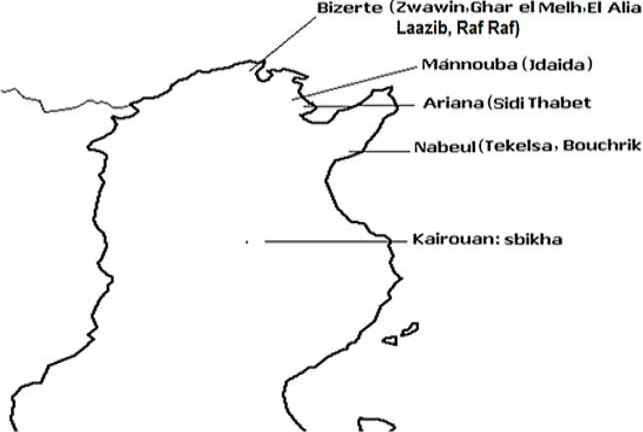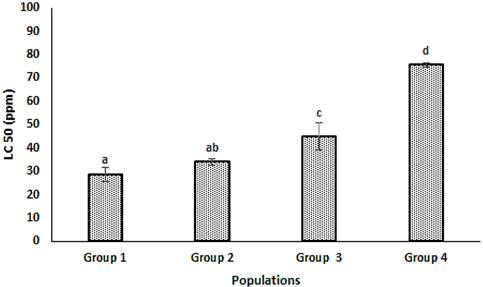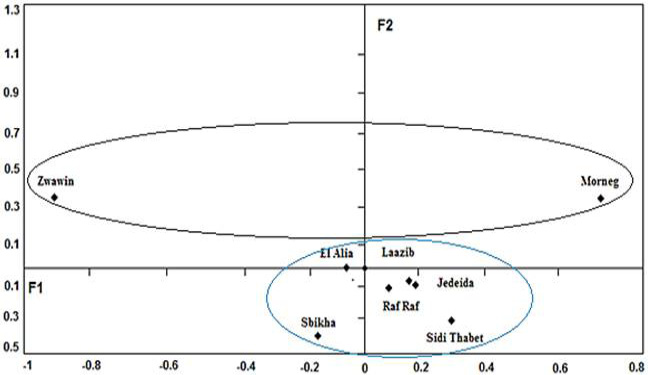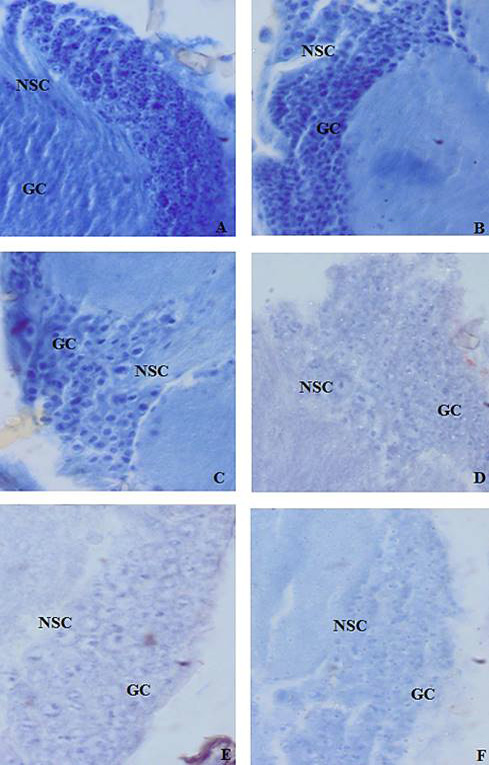Susceptibility of Ceratitis capitata Field and Laboratory Strains to Malathion and Spinosad in Tunisia
Susceptibility of Ceratitis capitata Field and Laboratory Strains to Malathion and Spinosad in Tunisia
Meriem Msaad Guerfali1,*, Heitham Hamden1, Salma Fadhl1, Wafa Djobbi1, Lotfi Sillini1, Wafa Marzouki1 and Mohammed Ammar2
Sampling localities of tunisian Ceratitis capitata populations.
LC50 of field populations according to the number of treatments. Group 1, 0 treatment; Group 2, 2-3 treatments; Group 3, 4-6 treatments; Group 4, more than 6 treatments.
Principle component analyses of LC50 in the different localities according to the frequency of treatments. The repartition is done on the plan Figure 1 and 2.
Brain structure within Ceratitis adults treated with spinosad: A and B, controls; C, 22ppm; D, 50 ppm; E, 100 ppm; F, 240 ppm. Heidenhain’s stain x1000. GC, glial cells; NSC, neurosecretory cells.













